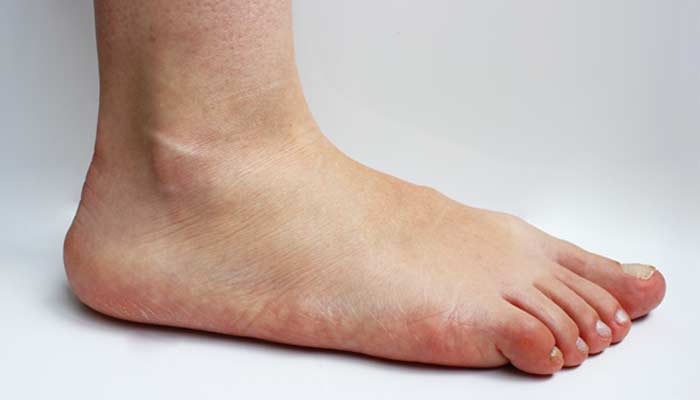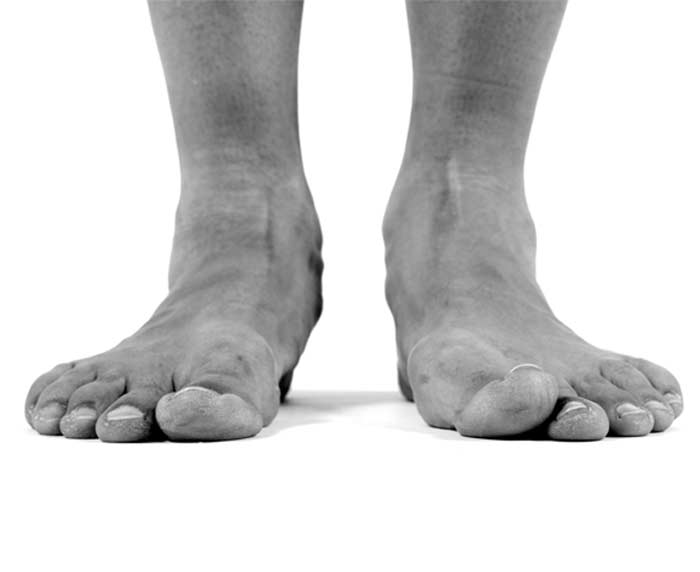
Flat foot, or flatfoot, is an abnormality characterized by arches of the foot that are flatter than what’s considered normal.
This problem may be caused by a damaged tendon, a deformity that was present at birth, or arthritis affecting joints around the heel area.
If custom orthotics haven’t helped, surgical flat foot correction may become an option.
When Is Surgical Flat Foot Correction Needed?
The need for surgery is typically based on the degree of misalignment of the foot and its supporting structures. Surgery is likely to recommended if this misalignment results in difficulty walking or standing. Before surgery is considered, patients are often advised to try the following non-operative treatments:
- Bracing or immobilization
- Rest or modification of activities
- Shoe inserts
- Various forms of physical therapy


What Does Correction Surgery Involve?
Surgery for the correction of flat foot involves a combination of procedures. Bones are normally cut to create a proper arch. Soft tissues that provide support to the arch are also repaired. A general anesthetic is usually give with an injection to numb the foot and reduce post-op pain. A nerve block may be placed behind the knee to further ease discomfort after surgery.
During the procedure, incisions are made into the foot. Damaged tendons within the affected area are repaired or removed and replaced with another tendon (tibialis posterior tendon reconstruction). Ligament repair may also be necessary. If the heel bone has shifted out of a place, a medializing calcaneal osteotomy may be done to reposition it and affix it in place with a plate or metal screws. Correction surgery may also involve:
- Lateral column lengthening to correct outward foot rotation
- Dorsal opening wedge osteotomy to realign the big toe side of the foot
- Fusion of one or more foot joints if arthritis has developed
Additional procedures may be necessary if flat foot has contributed to other foot problems, such as Achilles tendonitis, hammertoe, bunions, or plantar fasciitis. Medication may be recommended if arthritis has developed in the ankles because of arch misalignment.
Who Are Good Candidates for Surgery?
Surgical flat foot correction is generally performed when the arch is still flexible and not stiff. Preferred candidates for surgery are individuals who have tried non-surgical pain management and comfort improvement options without success. However, patients with diabetes typically advised to get evaluated by their primary care physician (PCP) to determine if it’s safe to have this type of surgery. Simply having underlying health issues doesn’t mean surgery isn’t possible. Determinations are made on an individual basis.
What Happens After Corrective Surgery?
Immediately following surgery, a plaster cast is placed on the affected foot that goes up to the knee. Painkillers may be prescribed to use on a short-term basis to relieve any post-surgery discomfort. When deemed appropriate, a rehabilitation program will be recommended. It may take up to a year to completely recover from surgical flat foot correction. Recovery can be more productive when patients are committed to actively participating in physical therapy and rehab.
Surgical flat foot correction may improve the cosmetic appearance of feet. However, the primary goal of this type of surgery is to restore function and ease discomfort. While patients are usually able to enjoy an active lifestyle following rehabilitation, certain excessively strenuous activities, like those that require jumping, cutting, and frequent running, may be best avoided to minimize the risk of re-injury.
